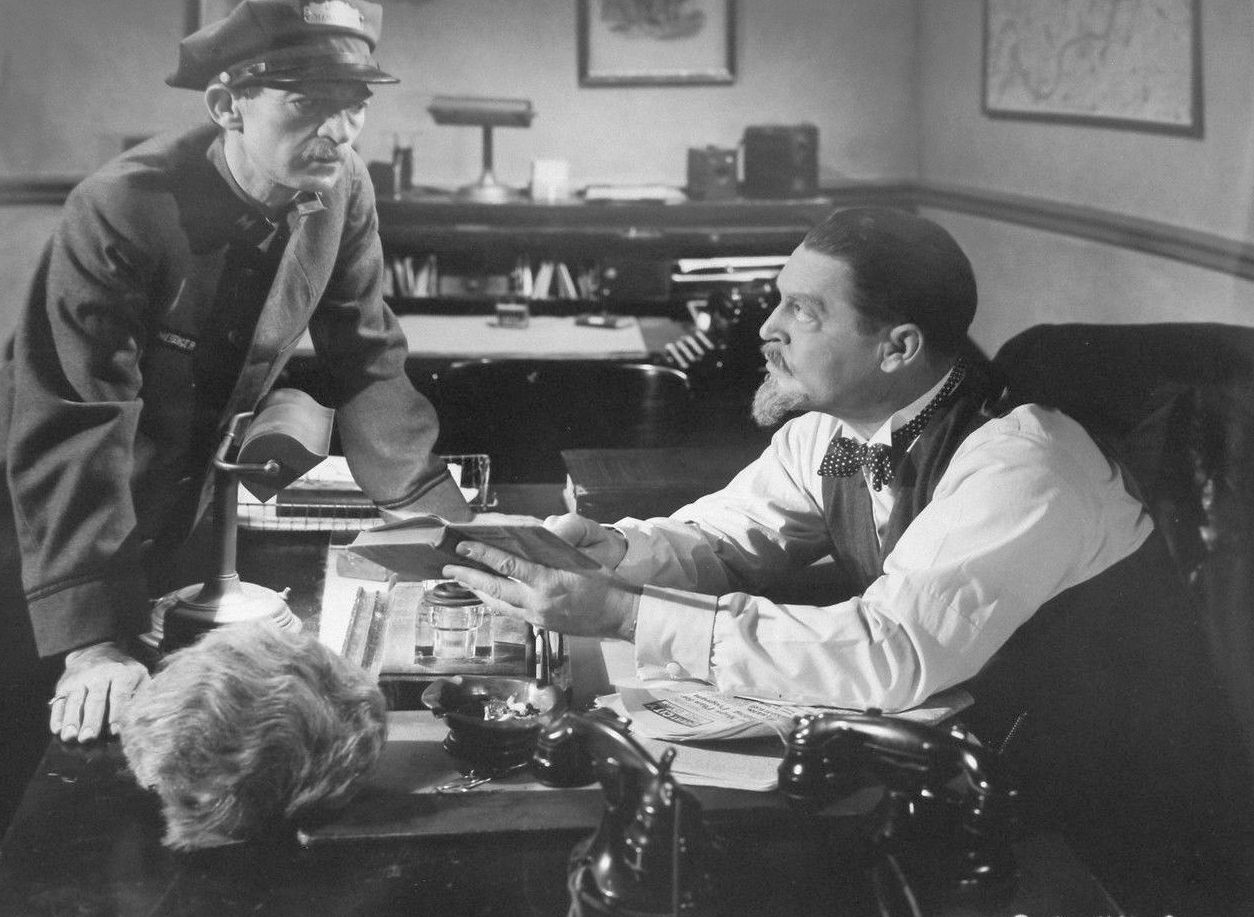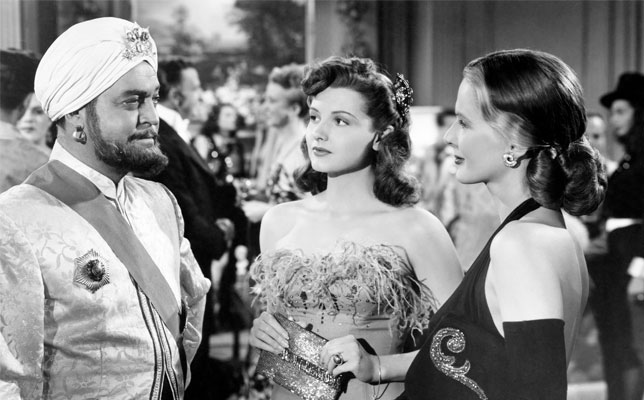Review: Trapped by Boston Blackie (1948)
Posted by Ivan G. Shreve, Jr. on Jan 24th 2015
The headline in the morning newspaper proves most distressing to reformed jewel thief Horatio “Boston Blackie” Black (Chester Morris) and his sidekick The Runt (George E. Stone). Their friend Joe Kenyon has been killed in a freak automobile accident, and our heroes stop by Kenyon’s detective agency to pay their respects to Helen (Mary Currier), Joe’s widow. Blackie and Runt agree to help Helen out on a case Joe was working; they’ll escort Doris Bradley (June Vincent) to an affair hosted by her Aunt Claire Carter (Sarah Selby), who demonstrates for all in attendance what she’s learned studying ballet with instructor Igor Borio (Edward Norris). While showing off her terpsichorean talents, Claire loses her valuable pearl necklace—known as “The Queen’s Ransom”—and a call is quickly placed to police headquarters, prompting the appearance of Inspector Farraday (Richard Lane) and porridge-for-brains Sergeant Matthews (Frank Sully) at the society soiree.
“At least we’re innocent,” observes The Runt with a sigh of relief. “Or are we?” He has good reason to ask this question; as the male party attendees are being searched by Farraday and Matthews, Blackie notices that someone has slipped the necklace into his costume, which prompts Runt to ditch the jewels in a nearby vase. When their masquerade as mystics is revealed to their police nemeses, Blackie and Runt must track down the thief (the contents in the vase are emptied during the two men’s attempt to flee the party)…and in addition, clear Helen of murder charges (she’s the number one suspect in her husband’s death).

Trapped by Boston Blackie (1948) was the penultimate entry (number thirteen, for those keeping score) in Columbia Pictures’ successful movie series based on the character created by Jack Boyle. It’s not a particularly strong example of what the franchise had to offer, mostly due to a rather convoluted script courtesy of Maurice Tombragel (with story by Charles Marion and Edward Bock) that’s sluggish in spots despite its brief running time. While offering up a multitude of suspects makes solving the picture’s mystery a bit more challenging, Trapped leaves one or two unsatisfying plot resolutions and a number of the movie’s characters disappear before the final fadeout, leaving one to wonder what purpose they served in the narrative in the first place.
The highlights of Trapped, as in any Boston Blackie picture, involve the disguises adopted by Blackie and Runt to investigate the mystery and elude capture from the determined Farraday. The two men are pretty much in costume from the get-go, impersonating phony mystics at the Carter affair. They’re then forced to don what may very well be their best masquerade in any film in the series: Blackie (Pa) and Runt (Ma) pose as Doris’ parents and pull it off so well that the dimwitted Matthews explains to Farraday: “They came in here in them get-ups and fooled everybody—they even fooled her, their own daughter! (Pause) No…that can’t be right.” Curiously, The Runt outpaces B.B. in the disguise department (he also impersonates a messenger boy and a cabbie)—but a protracted sequence where Blackie imitates an effete client to infiltrate Borio’s dance studio (while Runt searches an apartment) falls kind of flat.

Trapped by Boston Blackie features three leading ladies (to keep the audience guessing as to which one will turn on the hero, one assumes). The best known of these actresses is Patricia Barry (billed as Patricia White), who plays Joan Howell, a friend of Doris. As a Columbia starlet, Barry appeared in the studio’s two-reel comedies and Gene Autry westerns like Riders of the Whistling Pines (1949). She later became a familiar TV face, guest-starring on a plethora of series (including The Rifleman, The Twilight Zone and Thriller) and appearing on a number of daytime dramas (like Days of Our Lives, All My Children and The Guiding Light). June Vincent gets top billing in Trapped; she’s recognizable in such Universal features as The Climax (1944) and Black Angel (1946). She would go on to be dubbed by TV Guide as “Television’s Favorite Homewrecker” because, in most of her performances, it was even money the characters she played were trying to tempt either a husband or boyfriend.
The third female lead is played by Fay Baker (she’s Sandra Doray, an assistant to Borio), who can also be seen in such films as Notorious (1946), The House on Telegraph Hill (1951) and Deadline – U.S.A. (1952). Trapped also features an impressive lineup of character thespians including Edward Norris, Sarah Selby (later Ma Smalley on TV’s Gunsmoke), Ben Welden, Pierre Watkin…and “The Queen of the Dress Extras,” Bess Flowers, because there is a party scene.
Trapped by Boston Blackie marked the directorial debut of former assistant director Seymour Friedman, whose resume includes The Crime Doctor’s Diary (1949) and Counterspy Meets Scotland Yard (1950)—both movies inspired by old-time radio series. Friedman also helms the final Blackie film, Boston Blackie’s Chinese Venture (1949); when I review it next month it will end our current Boston Blackie retrospective—it’s available on MOD DVD, for those of you who’d like to check it out before I do.

Don’t forget that the radio Boston Blackie is available from Radio Spirits in our collections Outside the Law and Great Radio Detectives, and the TV Blackie as well…on the DVD collection Boston Blackie, Volume 1!

